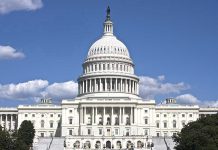
Virginia’s political map may be redrawn not once a decade, but whenever the dominant party feels the heat—threatening to upend the very ground rules that have defined American democracy for generations.
Story Snapshot
- Virginia Democrats are launching a rare mid-decade redistricting, defying established norms and igniting a national partisan map war.
- The move is a direct response to President Trump’s push for aggressive Republican gerrymandering across multiple states.
- Control of the U.S. House may hinge on this gambit, as Democrats chase the three seats needed to block Trump’s agenda.
- The timing—just before state elections—raises the stakes and could reshape power in both Virginia and Washington.
Virginia’s Special Session: More Than a Map—A Precedent in the Making
Virginia’s Democratic leadership will reconvene the General Assembly’s lingering 2024 special session. Officially, it’s a procedural maneuver. In reality, it’s an audacious power play: Democrats aim to redraw the state’s congressional map just days ahead of pivotal state elections. This marks Virginia as only the second Democratic-led state to challenge President Trump’s explicit calls for Republican gerrymandering, following California’s lead. Behind closed doors, House Speaker Don Scott orchestrates the strategy, while Senate President Pro Tempore L. Louise Lucas’s summer warning—“Stay tuned for Virginia…”—now rings prophetic. The stakes? Two to three additional Democratic seats, enough to potentially flip control of the U.S. House in 2026 and sandbag the Trump legislative machine.
Republican leaders responded with outrage, charging Democrats with “rewriting the rules before voters even finish casting their ballots.” House Minority Leader Terry Kilgore insists Democrats missed their constitutional window, promising legal challenges and calling the effort a “power grab.” The session’s notification letters, sent with surgical vagueness, never mention redistricting—yet everyone in Richmond knows what’s coming. This stealthy approach, enabled by the technicality of an ongoing session, allows Democrats to bypass standard delays that would otherwise slow the constitutional amendment process required for any mid-decade map change. The proximity to the November 4 state elections is not incidental; it’s a high-wire act with immense consequences.
Redistricting Norms Upended: The National and Historical Context
Redistricting in America has always been a bruising affair, but until now, it followed a once-per-decade rhythm, anchored to the decennial census. Virginia’s current districts, imposed by a court after a 2020 bipartisan commission deadlocked, reflect that tradition. The state’s six Democrats and five Republicans have battled over competitive seats, especially in the 1st, 2nd, 7th, and 10th districts—suburban and swing areas that will define who controls Congress. But 2025 is different. President Trump, determined to buck the historical trend of a president’s party losing midterm seats, openly directed GOP-led states like Texas, Missouri, and North Carolina to redraw maps for Republican gain. North Carolina’s Trump-backed map, for instance, cost Black voters a seat. Utah and Ohio have followed suit. California was first to counter-move on the blue side; now, Virginia’s Democrats are taking up the gauntlet, despite a 2020 constitutional amendment that was supposed to guarantee bipartisan fairness through an independent commission.
The scene is set for a constitutional brawl. Virginia’s process demands two consecutive legislative approvals, an intervening election, and finally a voter referendum to alter redistricting rules. Democrats must thread this needle before the next Congress. The wild card? The looming state elections. Lose their legislative majority, and Democrats’ entire gambit could collapse before the second required passage in January 2026. The incoming governor’s stance will also prove pivotal, as the executive holds the power to call the required referendum.
Power, Precedent, and the Erosion of Trust
Both parties frame the battle in the loftiest terms—“protecting fair representation” versus “subverting democratic norms.” The Democratic Congressional Campaign Committee calls the maneuver “critical in the fight to ensure voters have fair representation,” while Republicans decry it as an open-ended invitation to chaos. The deeper reality is stark: The rules of American elections now seem to shift with the winds of partisan advantage. If Virginia’s gambit works and is echoed elsewhere, congressional maps could become a revolving door—redrawn not for demographic change, but for whoever holds the legislative gavel.
This perpetual instability could fracture communities, dilute the influence of minority voters, and sap public faith in the system. Already, the legal sector is gearing up for a wave of lawsuits, while political consultants and strategists see a boom in business as the map wars escalate. On the ground, voters in key districts may find their representation upended overnight, with incumbents thrown into electoral jeopardy by lines drawn for maximum partisan effect. For the nation at large, the consequences go well beyond Virginia: If both sides normalize mid-decade remapping, the old stability of American elections—one map, one decade—could be lost for good, replaced by an endless tug-of-war over the literal boundaries of democracy itself.







